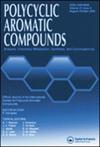Recent Advancements in Microwave Assisted Synthesis of Pyrazole Analogues: An Ecological Synthetic Approach
IF 2.6
3区 化学
Q2 CHEMISTRY, ORGANIC
引用次数: 0
Abstract
Pyrazole is among many synthetic compounds’ most privileged five-membered nitrogenous structural nuclei. Among a diverse range of heterocyclic analogs, pyrazole derivatives presented remarkable therapeutic significances, including antibacterial, antifungal, antimalarial, antitubercular anti-leishmanial, antidiabetic, antihypertensive and anticancer effects, etc. Pyrazole motif is also available as a structural part of many marketed drugs and clinical trial candidates bearing therapeutic importance. In traditional synthetic methodologies, synthesizing pyrazole derivatives requires several harsh reaction environments, such as introducing organic solvent, longer duration of time, elevated temperature, and energy consumption. By considering the pyrazoles’ utility and several drawbacks associated with their traditional synthetic approach, researchers have developed more economical reaction conditions to obtain them. In this regard, microwave irradiation, reaction at room temperature, and solvent and catalyst-free circumstances are ecologically favorable and cost-effective. Microwave-assisted organic synthesis (MAOS) of pyrazole derivatives has exhibited environment-friendly reaction conditions with the minor consumption of hazardous chemicals/solvents and significantly reduced reaction duration. Therefore, this review highlights the microwave-associated synthesis of pyrazole derivatives, likely an excellent alternative to eco-friendly synthetic methodologies.
微波辅助合成吡唑类似物的研究进展:生态合成方法
吡唑是许多合成化合物中最具特权的五元氮结构核之一。在众多杂环类似物中,吡唑衍生物具有显著的治疗意义,包括抗菌、抗真菌、抗疟疾、抗结核、抗利什曼原虫、降糖、降压和抗癌等作用。吡唑基序也可作为许多已上市药物和具有治疗重要性的临床试验候选药物的结构部分。在传统的合成方法中,吡唑衍生物的合成需要引入有机溶剂,反应时间长,温度高,能耗大等恶劣的反应环境。考虑到吡唑的实用性和传统合成方法的一些缺点,研究人员开发了更经济的反应条件来获得它们。在这方面,微波辐照、室温反应、无溶剂和无催化剂的环境是生态有利和成本效益高的。微波辅助有机合成吡唑衍生物具有环境友好的反应条件,消耗的有害化学品/溶剂少,反应时间明显缩短。因此,本综述强调了微波相关的吡唑衍生物的合成,可能是一个很好的替代生态友好的合成方法。
本文章由计算机程序翻译,如有差异,请以英文原文为准。
求助全文
约1分钟内获得全文
求助全文
来源期刊

Polycyclic Aromatic Compounds
化学-有机化学
CiteScore
3.70
自引率
20.80%
发文量
412
审稿时长
3 months
期刊介绍:
The purpose of Polycyclic Aromatic Compounds is to provide an international and interdisciplinary forum for all aspects of research related to polycyclic aromatic compounds (PAC). Topics range from fundamental research in chemistry (including synthetic and theoretical chemistry) and physics (including astrophysics), as well as thermodynamics, spectroscopy, analytical methods, and biology to applied studies in environmental science, biochemistry, toxicology, and industry. Polycyclic Aromatic Compounds has an outstanding Editorial Board and offers a rapid and efficient peer review process, as well as a flexible open access policy.
 求助内容:
求助内容: 应助结果提醒方式:
应助结果提醒方式:


